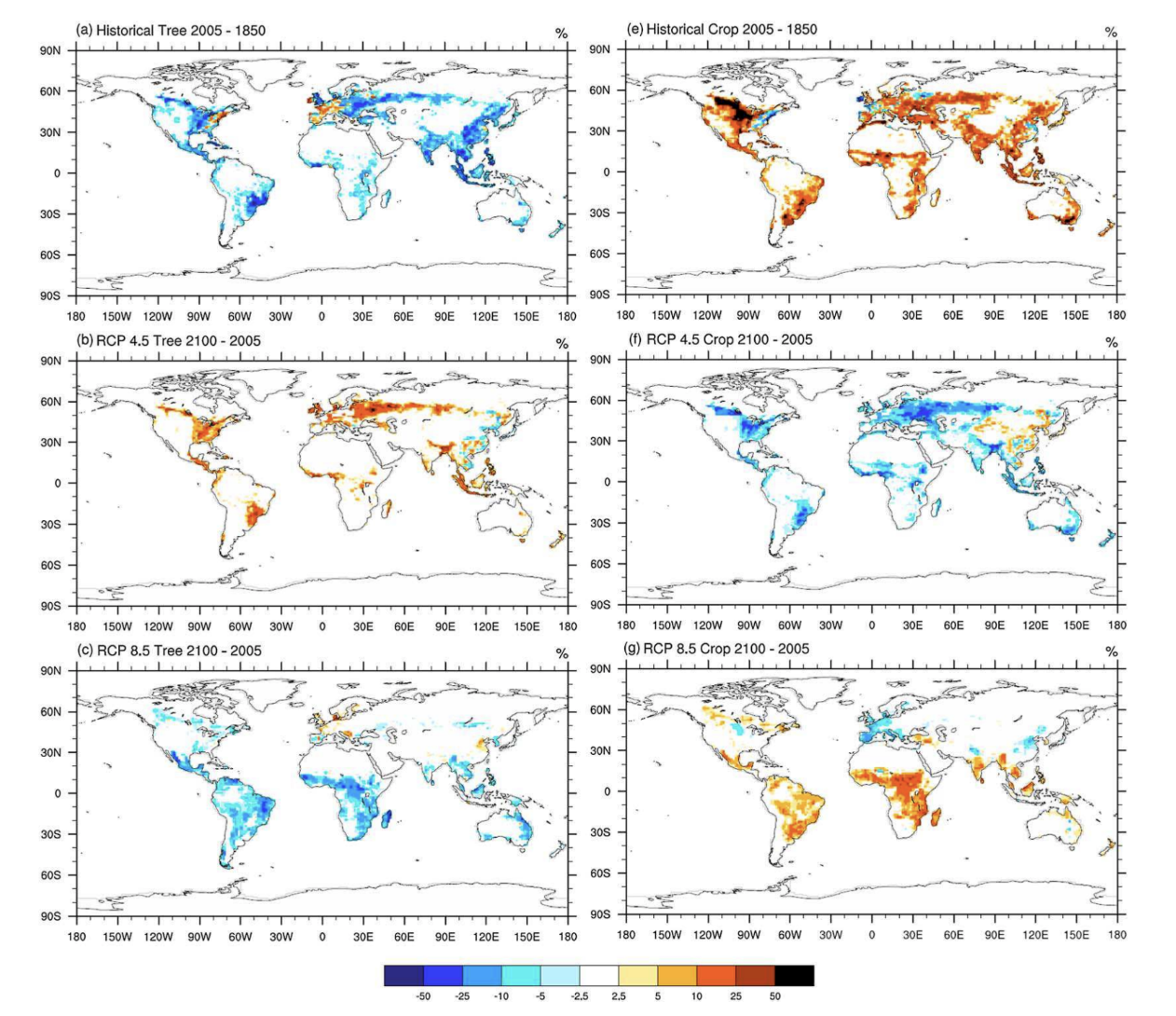In a paper published in AGU's Journal of Geophysical Research Biogeosciences, Professor George Hurtt contributes to study assessing the impacts historical and future land use and land cover change (LULCC) in the Community Earth System Model (CESM1). The study was led by Peter Lawrence and included David Lawrence, both from the National Center for Atmospheric Research. The researchers were able to attribute the carbon cycle impacts of Coupled Model Intercomparison Project phase 5 (CMIP5) LULCC in CESM to the contributions from individual Direct LULCC actions such as wood harvest and clearing for agriculture and pasture expansion and to a range of Indirect and Prior LULCC actions such as afforestation and the legacy impacts from altered terrestrial sinks from actions that occurred during and before the period of analysis.
The abstract is provided below:
Historical global land use and land cover change (LULCC) emissions of 160 PgC represent a third of all human CO2 emissions from 1850 to 2010. Future land management decisions will have large impacts on the global carbon cycle, with scenarios ranging from continued deforestation and wood harvest to mitigation scenarios that reduce total emissions through afforestation and conversion to bioenergy. Here we present a systematic assessment of Community Earth System Model (CESM1) Coupled Model Intercomparison Project phase 5 (CMIP5) historic and projection simulations, with and without LULCC. For the historical period, CESM produced a Net LULCC flux of 123 PgC to the atmosphere, removing −130 PgC from ecosystems while increasing wood product pools by 7 PgC. Historical LULCC fluxes were equally divided between conversion and wood harvest fluxes. For the Representative Concentration Pathway (RCP) 4.5 afforestation scenario CESM produced a Net LULCC flux of 53 PgC to the atmosphere, removing −58 PgC out of the ecosystem and increasing wood product pools of 5 PgC. The afforestation offsets the Direct LULCC flux of 153 PgC with a negative Indirect LULCC flux of −94 PgC. For the RCP 8.5 high LULCC scenario, CESM produced a Net LULCC flux of 211 PgC, removing −227 PgC from ecosystems and increasing wood product pools of 15 PgC. The LULCC of the future RCP scenarios was dominated by wood harvest fluxes, which is a process that was not included in many of the CMIP5 models. The analysis framework also allowed the attribution of Indirect and Prior LULCC fluxes that offset the Direct LULCC fluxes in many cases.


